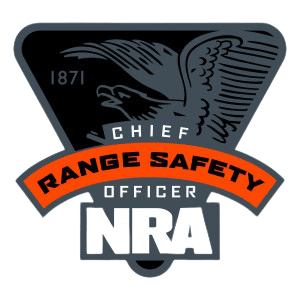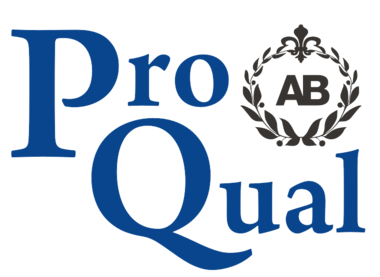ProQual Level 3 Award in Hostile Environment Awareness
Dates
Any time of the month
Length
7 Days
Price
$5000
Location
USA, UK, Thailand, Lebanon, Sri Lanka, Spain and Italy

Introduction
The awarding organisation for this qualification is ProQual Awarding Body and the regulatory body is the Office of Qualifications and Examinations Regulation (Ofqual).
This qualification has been accredited onto the Regulated Qualifications Framework (RQF).
For NGOs Traveling Overseas To High-Risk Regions, HEAT Serves Several Critical Purposes:
Risk Awareness: HEAT training educates participants about the specific risks and threats they may encounter in the regions they plan to operate in. This includes understanding the local security environment, potential hazards, and cultural sensitivities.
Personal Safety and Security: HEAT training equips participants with practical skills and knowledge to enhance their personal safety and security while working in high-risk areas. This includes techniques for situational awareness, avoiding danger, responding to threats, and managing personal security risks.
Emergency Preparedness: HEAT training prepares participants to respond effectively to emergencies and crisis situations that may arise while working overseas. This includes training in first aid, emergency evacuation procedures, communication protocols, and crisis management.
Cultural Sensitivity and Communication: HEAT training helps participants develop cultural awareness and sensitivity to navigate diverse cultural and social contexts effectively. Effective communication skills are emphasized to build relationships with local communities and stakeholders while minimizing misunderstandings or conflicts.
Legal and Ethical Considerations: HEAT training provides participants with an understanding of relevant legal and ethical considerations when operating in high-risk environments. This includes compliance with local laws and regulations, as well as adherence to organizational policies and codes of conduct.
The Outcome Of Heat Training For Ngos Traveling Overseas To High-risk Regions Is Multifaceted:
Improved Safety and Security: Participants gain the skills and knowledge necessary to assess and mitigate security risks, reducing the likelihood of harm to themselves and their colleagues while working in challenging environments.
Enhanced Resilience: HEAT training helps build participants’ resilience and adaptability to cope with stressful or dangerous situations effectively. This includes mental preparedness, stress management techniques, and strategies for maintaining well-being in challenging circumstances.
Effective Risk Management: NGOs are better equipped to assess, plan for, and manage risks associated with their operations in high-risk regions, ensuring the safety and security of their personnel and the successful implementation of their projects and programs.
Strengthened Organizational Capacity: HEAT-trained personnel contribute to building the organizational capacity of NGOs to operate safely and effectively in high-risk environments, enhancing their ability to fulfill their missions and deliver assistance to vulnerable populations.
Entry Requirements
Centres should carry out an initial assessment of candidate skills and knowledge to identify any gaps and help plan the assessment.
Qualification Structure

Assessment
Candidates must demonstrate the level of knowledge described in the unit. Assessment is the process of measuring a candidate’s knowledge and understanding against the standards set in the qualification.
Each candidate is required to produce evidence which demonstrates their achievement of all of the learning outcomes and assessment criteria for each unit.
Evidence can include:
– assignments/projects/reports
– worksheets
– portfolio of evidence
– course work
Learning outcomes set out what a candidate is expected to know, understand or be able to do.
Assessment criteria specify the standard a candidate must meet to show the learning outcome has been achieved.
To achieve this qualification all candidates must produce evidence which demonstrates their achievement of all of the assessment criteria.
Qualification
Ofqual Qualification Number
Level
3
Guided Learning Hours
15
Total Qualification Time
20
Skill Prerequisites
- ABA Level 2 Basic Award in First Aid at Work Awareness
- Or Equivalent with Instructor’s Approval
Assessment
Topics
1.Understand the context of working in a hostile environment
1.1 Explain the results of a context analysis
1.2 Identify external and local sources of information
2. Understand the potential risks of working in a hostile environment
2.1 Identify the nature of risks in terms of
(a) personal risk
(b) organisational risk
2.2 Conduct a risk analysis, identifying threats and
vulnerabilities
2.3 Demonstrate knowledge of contingency planning,
including an evacuation plan
2.4 Demonstrate a knowledge of planning for incidents,
including
• the role of an Incident Management Team
• medical incidents
• personal security
3. Understand security risks when working in a hostile
environment
3.1 Demonstrate a knowledge of preparing for and
responding to risks when meeting others and
travelling, including:
• meeting / leasing
• car jacking
• communications
• vehicles
• weapons and mines
• IED
• civil unrest and demonstrations
3.2 Demonstrate knowledge of how to manage and
minimise the risks above
3.3 Demonstrate knowledge of the risk of different
types of kidnap, avoidance and survival
4. Understand how to react and respond in a crisis situation in a hostile environment
4.1 Identify typical crisis situations
4.2 Demonstrate knowledge of how to respond in an
active shooter situation, including when law
enforcement arrives at the scene
4.3 Prepare an Emergency Action Plan (EAP)
4.4 Describe how to analyse the effectiveness of an EAP












